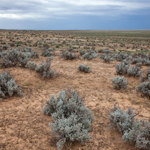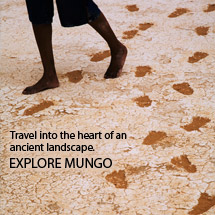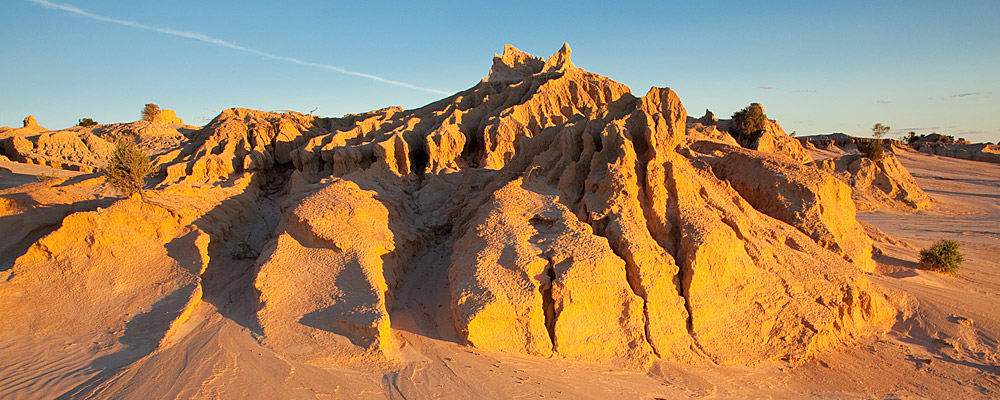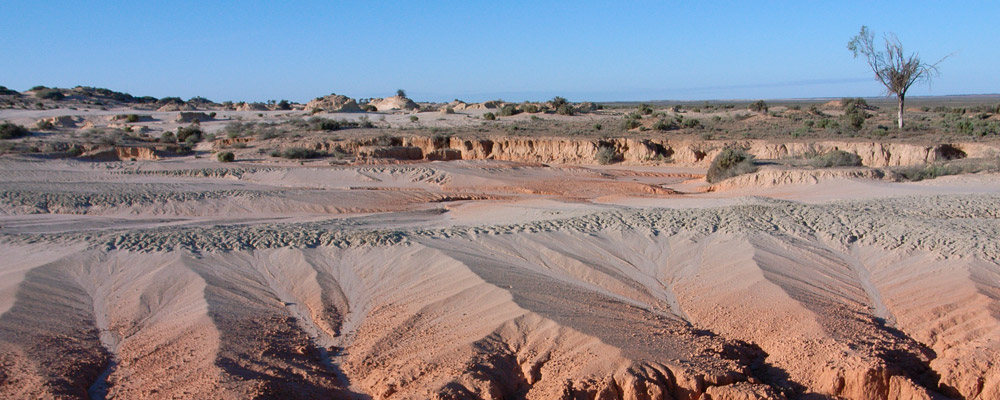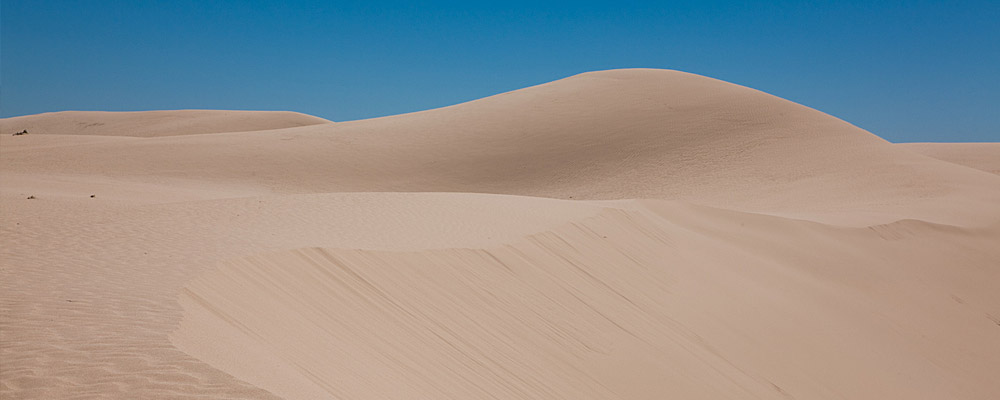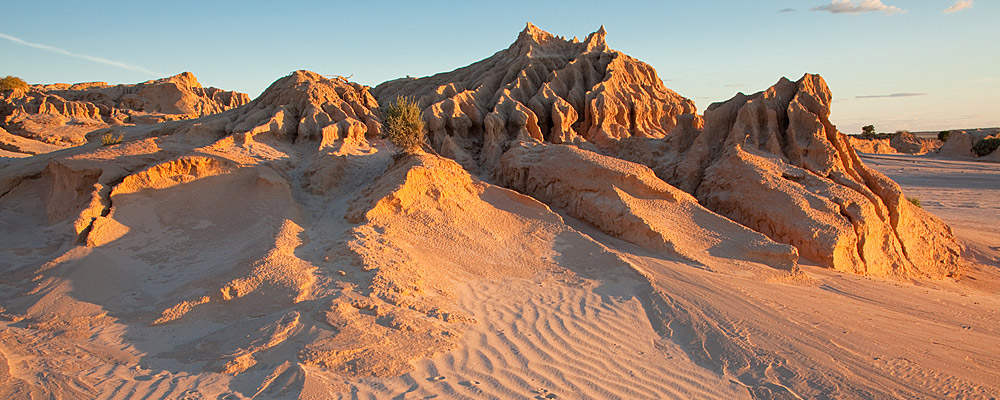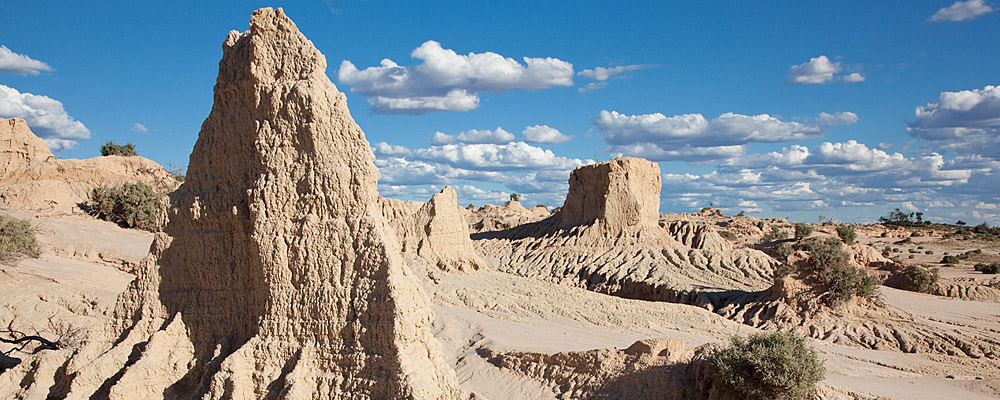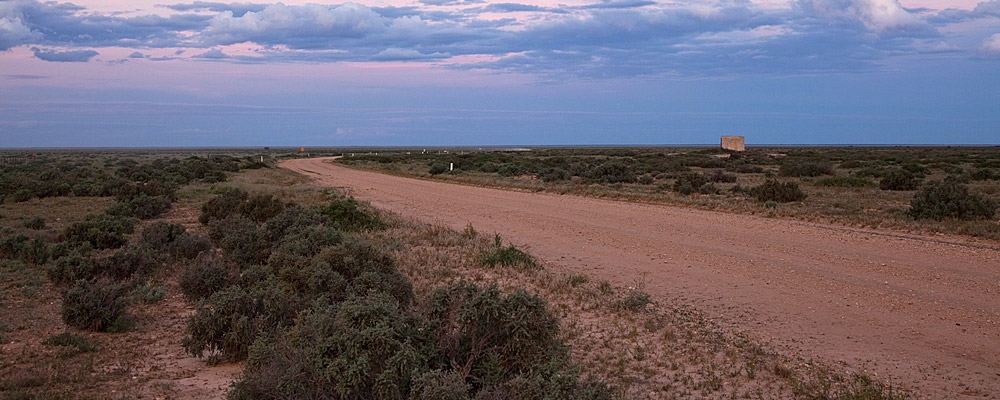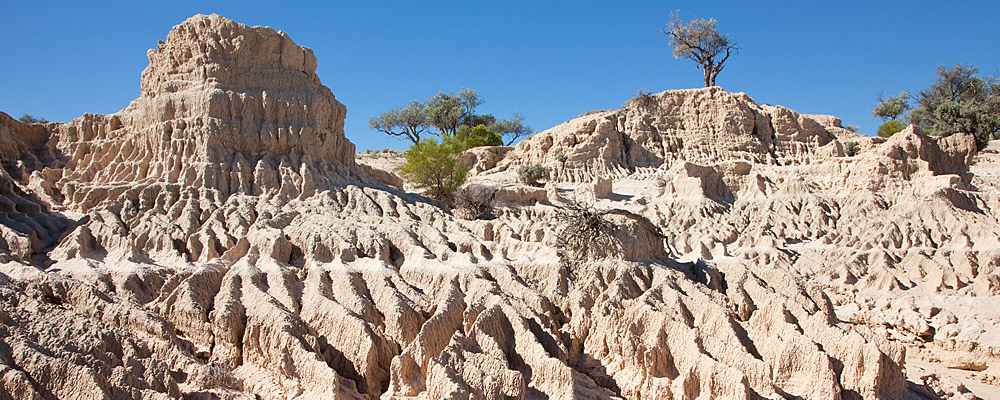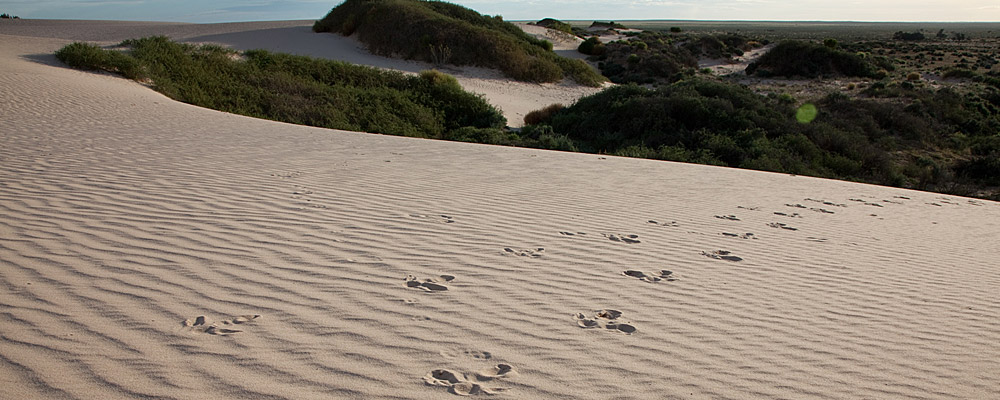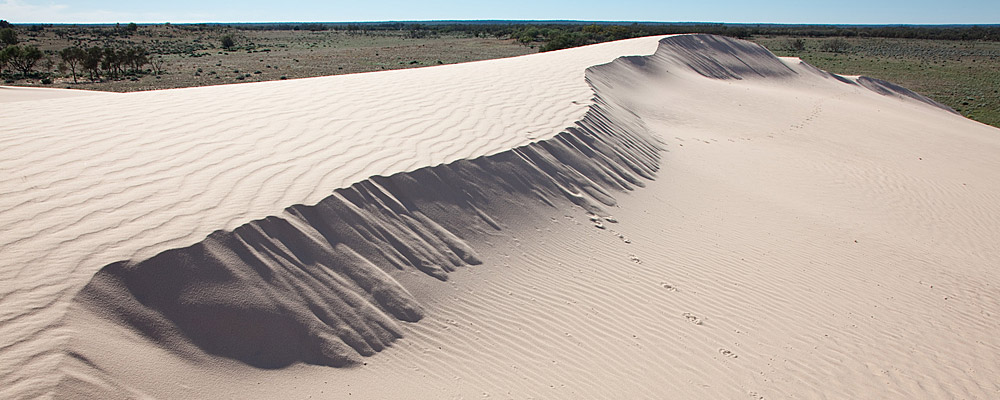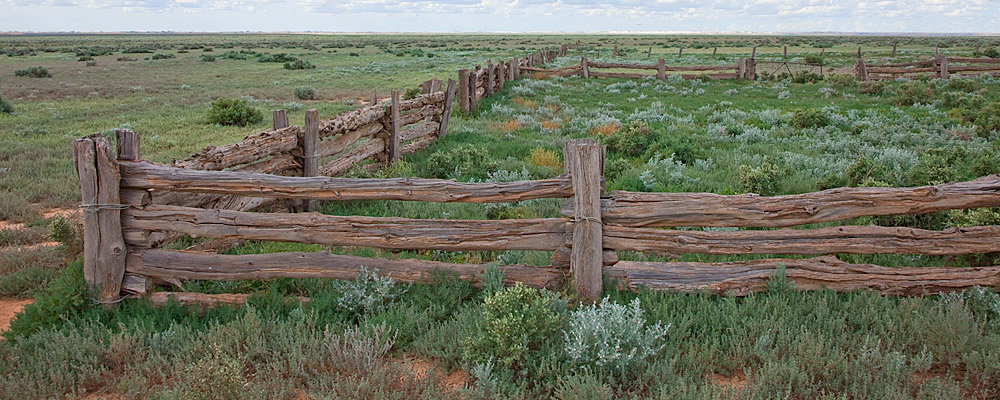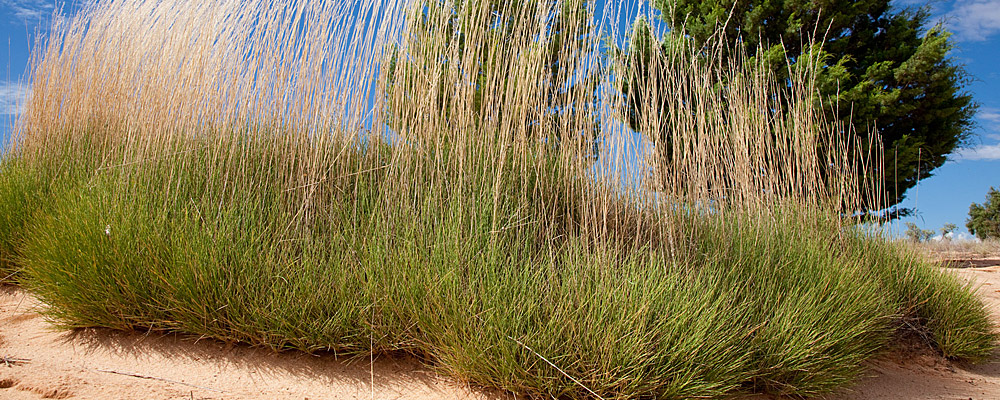Understand Mungo
Mungo's Environment Today
Landscape
The Mungo landscape continues to be moulded by wind and rain. Today the park is dominated by the ancient dry lake basins (playas) of Mungo, Leaghur and Garnpang, with lunettes on their eastern shores and dunefields to the west. East of the lakes are more dunefields and sand plains. The major land systems are described below.
Playas and Basins
The lakebed soils are a mosaic of grey and red heavy clays and in places contain channels and gilgais. The Mungo lunette (the Walls of China) is made up mostly of loosely cemented whitish sands and well consolidated clays, with considerable gully erosion. The Leaghur and Garnpang lunettes have only suffered minor erosion and have abundant vegetative cover.
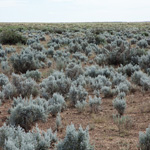
Sandplains
The undulating sandplains consist of calcareous loamy to sandy loam red and brown soils with isolated depressions of grey clays.
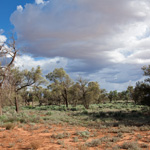
Dunefields
The dunefields of the park vary. They include: parallel dunes of deep loamy sand with narrow swales of calcareous loamy red earths; dunefields of parabolic and unaligned dunes with deep sandy red soil swales; high unstable dunes of deep white sand interspersed with flats of calcareous loamy brown soils.
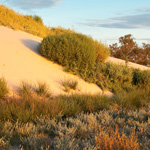
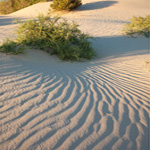
Lunettes
The lunettes are major landforms of great importance to the ancient heritage of the area. Four major layers of sediment form the Mungo lunette, and each represents a different period of time and different environmental condition. The layers have been named after the local pastoral stations Golgol, Mungo, Arumpo and Zanci, and were deposited in that order. The upper three contain a vast amount of evidence of human occupation including hearths, middens, stone tools and burials; as well as megafaunal remains.
Over thousands of years, wind and water have carved the lunette into spectacular formations comprised of sand and clay. Rain washes away the soft sands and muds, creating the rilled ridges and residuals that characterise the Walls of China. The dislodged sand is then picked up by the wind and heaped into huge mobile dunes along the back of the lunette. The fragile carvings in the lunette make for excellent photos in the setting sun. Remember that it's strictly forbidden to climb on the lunette features or disturb artefacts.
